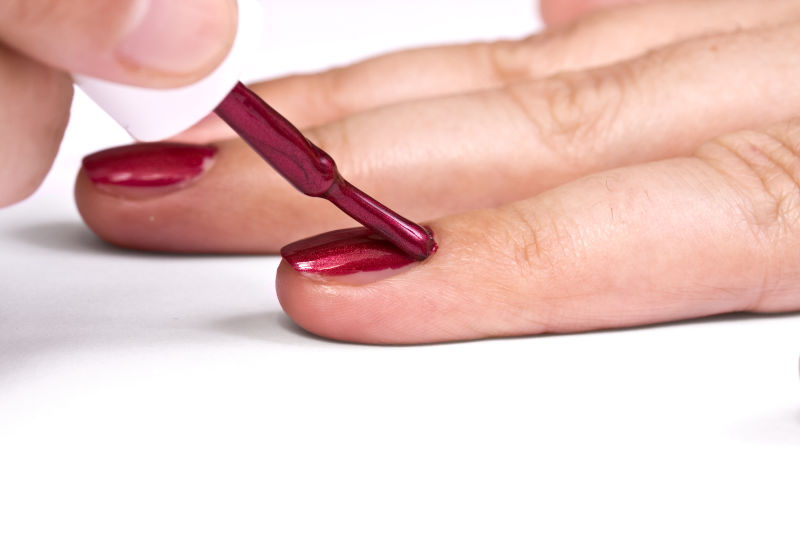Emerging evidence of harm
Evidence of TPHP’s health effects is limited because federal regulations rarely require safety data for chemicals used in consumer products, leaving scientists scrambling to keep up with emerging chemicals of concern.
Recent research in lab and animal experiments suggests the chemical can disrupt hormone activity, promote obesity and cause heart damage. Human data is limited, though a 2010 study published in Environmental Health Perspectives found an association between TPHP in men and lower sperm counts.
Heather Stapleton is an associate professor of environmental sciences and policy at Duke University and led the current study.
“There’s a lot of attention on nail salons and what the workers are exposed to,” she said in an interview. “But we should also be thinking about all the people attending these nail salons and what they are being exposed to.”
In previous work, Stapleton, an expert on human exposure to flame retardants, had found TPHP’s breakdown product, DPHP, in the urine of over 90 percent of people tested. She had assumed the exposures came from treated foam and electronics, among the chemical’s primary uses. But surprisingly, the levels in women were twice as high as those in men.
Gender disparity in exposures
Stapleton was puzzled. How could women have higher levels if the exposures were coming from couches or computers? A similar pattern had been seen in a Centers for Disease Control survey of Americans’ exposure to phthalates, a chemical added to hairspray and perfume, which could explain the gender disparity.
Stapleton doubted that manufacturers would use a flame retardant in personal care products. But a quick Internet search revealed that TPHP – commonly used to replace the brominated and chlorinated flame retardants that were phased out due to safety concerns -- was indeed being used in nail polish.
So Stapleton went to the store, bought some nail polish and analyzed it in her lab. “Sure enough,” she says, “it was in there.”
For this new study, published in Environment International, Stapleton partnered with scientists at the Environmental Working Group, which maintains a database of ingredients in cosmetics. About half of over 3,000 nail products on the market the past three years list TPHP as an ingredient, according to the EWG database.
TPHP is likely used as a plasticizer in polish, to prevent chipping and cracking so paint and nails bend together.
To find out if the nail polish could explain the women’s higher TPHP exposures, Stapleton first bought 10 more bottles of polish and, using a magnifying glass to check the ingredients hidden in the tiny type, looked for TPHP. When her team analyzed the bottles, they found TPHP in eight of the samples, including two that didn’t list it. Clear nail polish had higher concentrations than colored varieties.
Then the team recruited 16 women, gave them a urine collection kit and a bottle of clear nail polish and asked them to collect urine before and after they painted their nails.
The TPHP metabolite was in most of the urine samples before women started painting their nails. But 10 to 14 hours afterward, the levels in many of the samples were nearly seven times as high.
Routes of exposure
Stapleton thought women were inhaling the chemical. To make sure, she recruited a second group of 10 women and modified the experiment. The volunteers still collected urine before and after applying nail polish, but this time they also applied polish to fake nails attached to gloves, to prevent skin contact.
Stapleton expected that when women painted the fake nails, TPHP levels would be about the same as when they painted their own nails. But they weren’t. They dropped substantially, looking more like the baseline levels.
“I was actually very shocked to see the levels drop so much,” Stapleton said. Nails are generally impervious to most substances. But clearly, the chemicals were entering the women’s bodies through the skin, probably through the cuticles, a possibility Stapleton says she still needs to test.
In a report accompanying the study, EWG recommends consumers check the label for TPHP and search their Skin Deep database to find brands that don’t use it.
In a statement, Beth Lange, chief scientist for the Personal Care Products Council, said the council stands behind its products.
"Clearly, there is no substance behind these alarming claims," she said. "The makers of nail polish ... take pride in providing Americans with access to a wide variety of safe high quality and innovative products they trust and enjoy."
The council did not respond to questions about how long manufacturers have been using TPHP.
The 26 Duke University students and employees that participated in the study may not reflect the broader U.S. population, the researchers allow. But it’s not just a simple observational study, says Asa Bradman, an exposure assessment expert at the UC Berkeley, who was not involved in the study.
“They tested different exposure scenarios and over 400 urine samples,” Bradman says. “It may not be representative of the general population, but it shows that nail polish is a source of exposure and that more general studies are needed to test population exposures.”
San Francisco recognized that nail products carry health risks five years ago, when it passed the first legislation in the country to encourage safer practices among the city’s 250 nail salons by promoting shops that avoid the “toxic trio” -- dibutyl phthalate, toluene and formaldehyde.
Stapleton suspects that manufacturers are using TPHP as a replacement for dibutyl phthalate.
“With the flame retardants, we went from brominated to chlorinated and then TPHP," says Green Science Policy Institute Director Arlene Blum, who helped revise the California furniture standard so flame retardants were no longer needed in foam.
